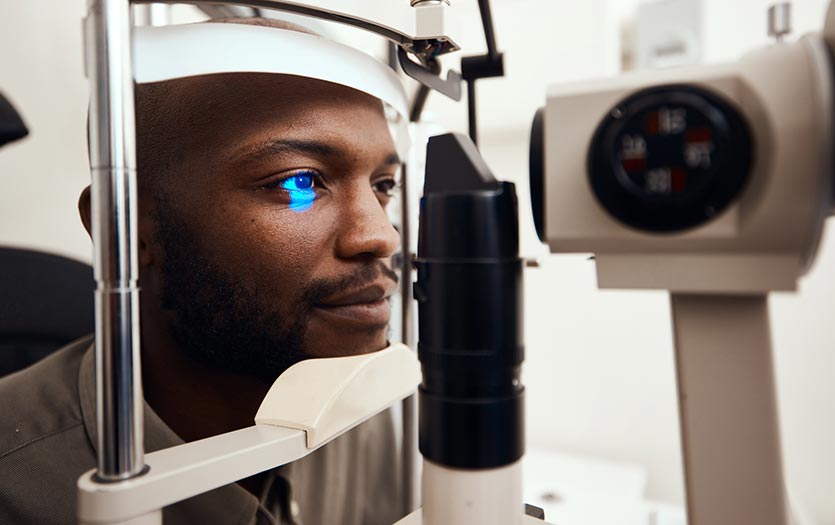
The post was written by Susan Bruick, RN, MSN, CDCES, Parkview Diabetic Care Services.
Did you know that having diabetes puts you at an increased risk of vision changes and problems? That’s because poorly controlled diabetes can cause microaneurysms (MAs) in your retinas, a part of your eye that is responsible for the images you see. This can lead to an eye disease called diabetic retinopathy. Knowing how to care for your eyes if you have diabetes and understanding the treatment options for diabetic retinopathy is an important step to maintaining or improving your eye health.
In this post, we’ll take a closer look at the complications that come with diabetic retinopathy, and how Parkview Diabetic Care Services is utilizing artificial intelligence (AI) to screen for the disease.
What is diabetic retinopathy?
Diabetic retinopathy is a complication of diabetes that occurs when the tissues in the back of the eye are damaged due to poorly controlled blood sugars. This damage can cause blood vessels to leak blood into the retinas, creating changes in vision and possible vision loss. Early symptoms of diabetic retinopathy include floaters, blurriness, dark areas of vision and difficulty perceiving colors.
How can I prevent diabetic retinopathy if I have diabetes?
If you have diabetes, it’s critical that you have yearly eye exams by a trained optometrist or ophthalmologist. It’s also important that you take steps to decrease your chance of developing diabetic retinopathy including:
- Managing your glucose levels
- Managing your blood pressure values
- Following standards of care for your diabetes
How is diabetic retinopathy diagnosed?
Eye doctors can check for diabetic retinopathy as part of your dilated eye exam. Here at Parkview, we can also provide a convenient screening during your routine doctor’s visit that utilizes AI technology. This quick screening takes less than five minutes and is completely non-invasive.
If the result of the screening is negative, the care team will document the results and no additional screening is necessary unless you are experiencing blurred vision, in which case you should followed up with your eye doctor. If you have a positive result from the screening, a referral will be placed to an optometrist or ophthalmologist for additional diagnostics.
What are the treatment options?
Treatments for diabetic retinopathy depends on the length of time you’ve had retinopathy, the severity of the condition, as well as the cause of retinopathy. Some options that can be discussed with your eye doctor include:
- Injections to block the growth of abnormal blood vessels and reduce potential fluid in the retina.
- Laser surgery to treat retinopathy to cauterize microaneurysms in the eye and prevent further damage.
- Vitrectomy, which is a kind of eye surgery that can treat problems with the retina.
You should also make lifestyle modifications, including lowering glucose values, reducing blood pressure vales and reducing cholesterol levels. Some anti-glycemic agents have been associated with worsening of retinopathy, which is an important discussion to have with your healthcare provider.
For more education on diabetes care tips, please reach out to Diabetes Care Services at 260-373-4280 or visit parkview.com/diabetes. To learn more about the AI technology that is available in your provider’s office, watch this video.
